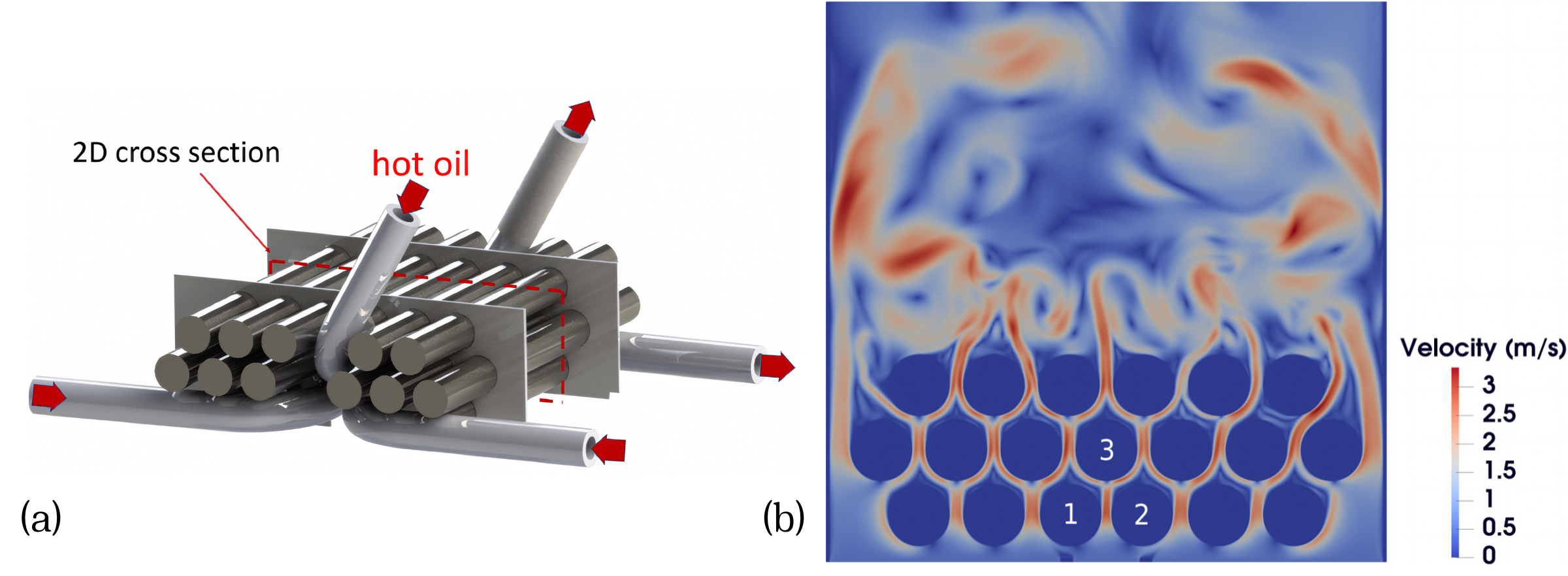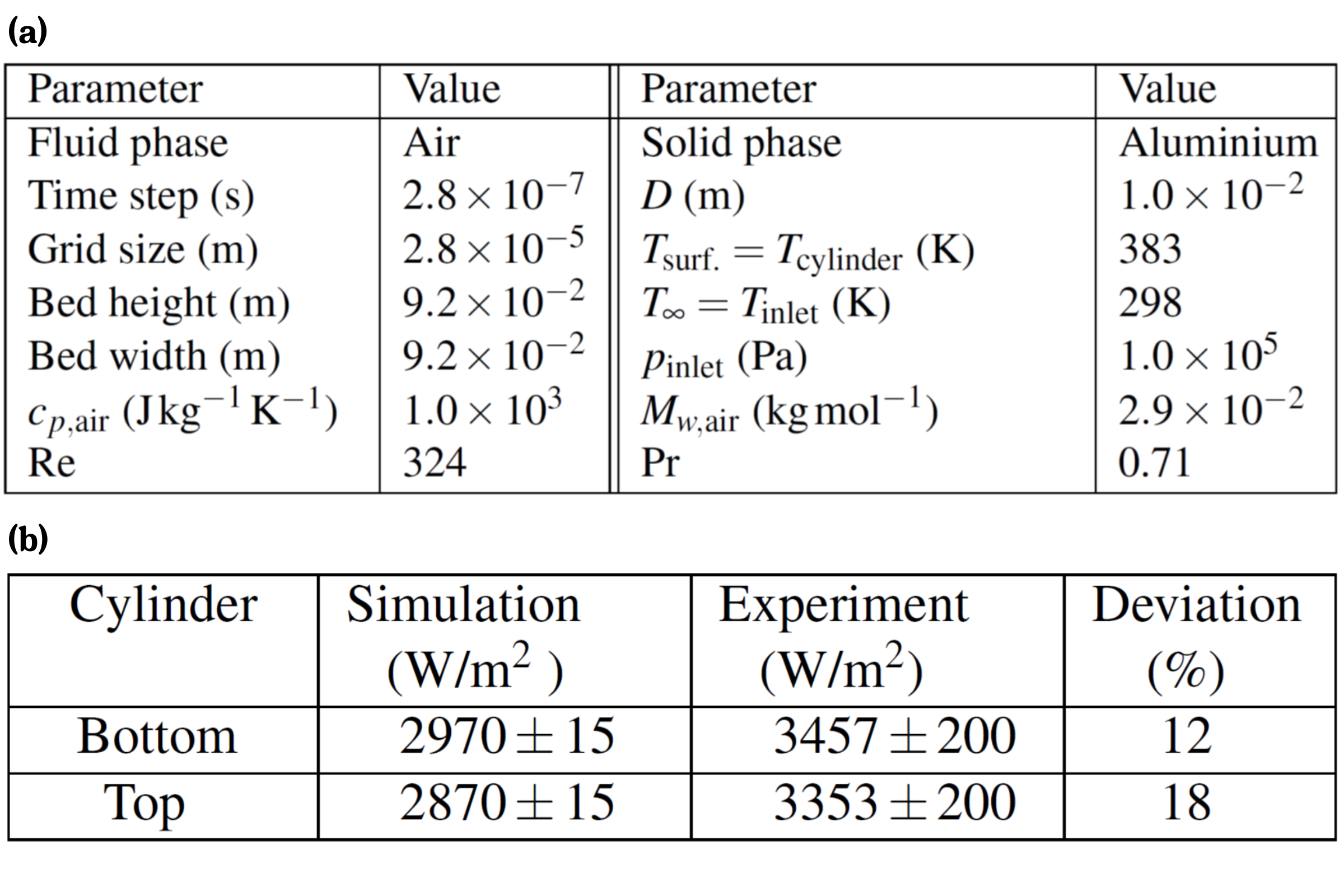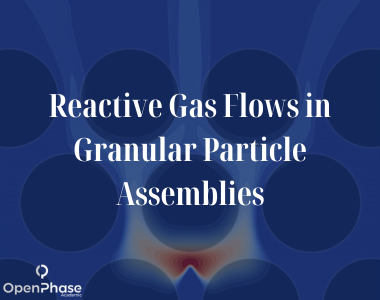Solid-gas heat transfer in particle beds
Introduction
The exchange of heat between a flowing gas and solid particles is of key importance for many industrial processes including heat exchangers, cooling systems and biomass conversion. It is, therefore, one of the major topics being studied in the context of fluid dynamics and energy transport. However, due to its complexity, formulating effective predictive models for heat transport in systems involving a large number of granular particles remains a challenging task. In this context, fully resolved numerical simulations can help to better understand the influence of particle-related parameters (e.g., heat conductivity, particle shape and porosity) and flow properties (e.g., Reynolds, Prandtl and Schmidt numbers) on heat transfer between the gas and the particle assembly and thus provide guidance for the development of efficient reduced models.
Result
To address this topic, OpenPhase academic has been recently extended by developing new modules, which adequately account for heat transfer between the flowing gas and solid particles [1]. The thus developed code has been used to study a number of test cases and has been validated by comparisons to experimental data (Figure 1, and Table 1).

Figure 1 (a): Experimental setup used to validate hybrid phase-field-lattice Boltzmann simulations of heat transfer. (b): Velocity magnitude in a two dimensional (2D) flow simulation across the middle dividing plane (see the red dashed rectangle in the experimental setup). The three discs (labeled as 1, 2 and 3) represent the cylinders pumped with hot silicon oil [1].

Table 1: (a) Parameters used to study the benchmark problem from Fig.1. (b) Comparison of the simulated effective heat flux with experimental findings.
Related Topics


